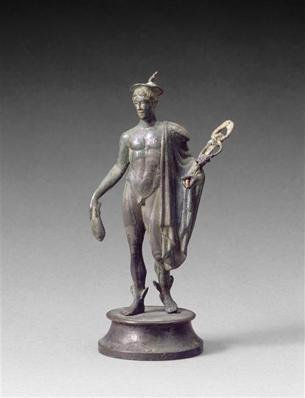
Les collections
Statuette of Mercury
This bronze statuette of Mercury shows him in his most classical appearance: a nude young man with a chlamys (travellers cloak) on his shoulder, the winged petasus on his head, small wings on his heels, and holding the caduceus. The animals that normally accompany him, cockerel, ram and tortoise, are missing.
The Roman god Mercury was particularly popular in Roman Gaul, especially in the centre, north and east of the country. He protected traders, traveller and foreigners, and unusually, artisans too, although this was peculiar to Gaul.
The powers of the Gallo-Roman Mercury, therefore, were more extensive, and perhaps reflect the partial assimilation of the Greco-Roman divinity into one or several Celtic deities. The statuette, like others in terracotta and silver, probably belonged to a small domestic chapel, where religious rites were carried out, even though Mercury was also worshipped in major sanctuaries, sometimes located on hilltops like the Puy de Dôme.




